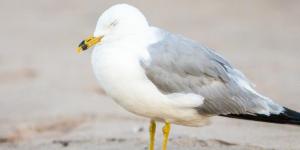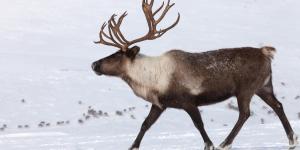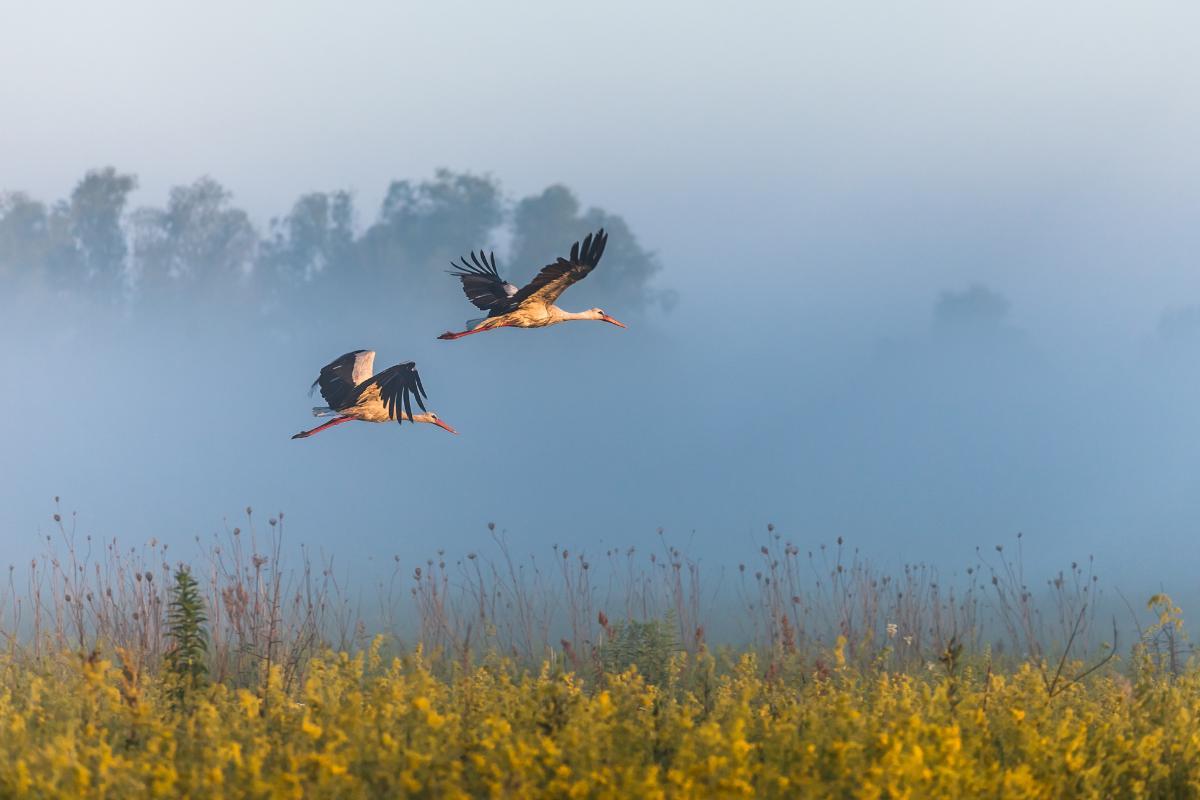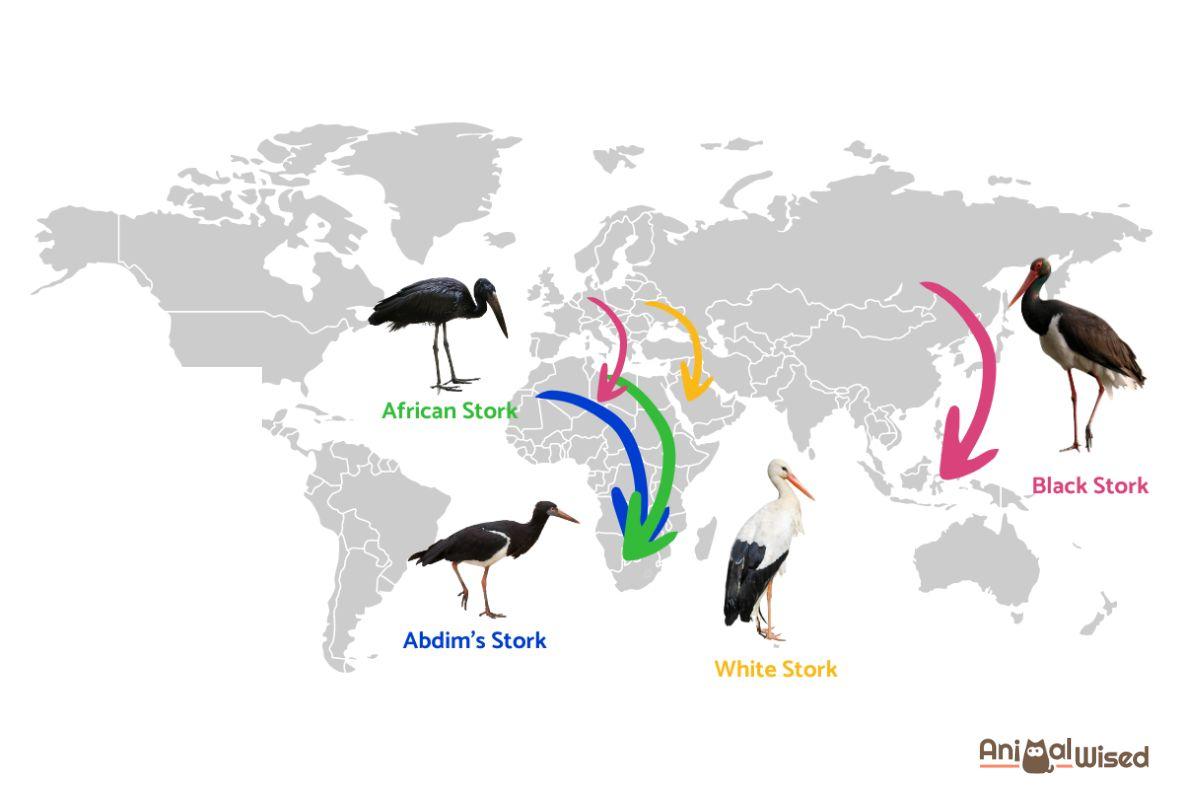Where Do Storks Go in Winter?

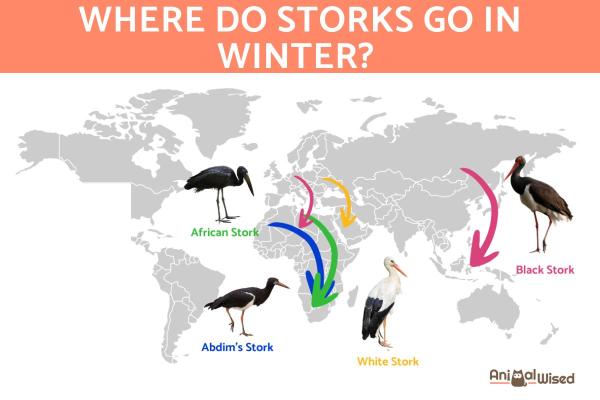
Every year, as the days grow shorter and temperatures begin to drop, one of nature's most fascinating events takes place: the migration of storks. These large, majestic birds embark on an incredible journey, traveling thousands of kilometers to escape the winter chill and find warmer climates. But where exactly do they go? And what routes do they follow?
In this AnimalWised article, we'll explore the migration patterns of storks, the seasonal paths they take and the destinations they reach to survive the colder months.
Why do storks migrate?
Storks migrate as a way to survive, mainly to find food and live in better conditions for raising their young. This behavior helps them cope with changing seasons, making sure they can eat and reproduce in places where the environment is favorable.
Storks are highly sensitive to weather conditions and food availability. As winter approaches, their primary prey, including insects, small mammals, fish, reptiles, and amphibians, becomes increasingly scarce due to the cold temperatures. To survive, storks must adapt their behavior and seek alternative habitats where food resources are more plentiful.
To survive, storks migrate to warmer regions, where they can find plenty of food during the colder months. These warmer areas, such as parts of Africa and Southern Europe or Asia, offer better hunting conditions. Migration allows storks to escape the harsh winter and feed in places where temperatures are more suitable. They travel long distances, sometimes thousands of kilometers, using wind currents to help them save energy.
In spring, when the weather warms up in their original habitats, storks return to breed. These breeding grounds, often in Europe and parts of Asia, offer good conditions for raising chicks, with more food and safe nesting areas. The storks time their return to ensure they can mate, build nests, and raise their young when conditions are best.
Storks demonstrate their extraordinary navigational skills during their annual migrations. Relying on a combination of visual cues from the landscape, the sun's position, and even magnetic fields, they embark on epic journeys spanning thousands of miles. Traveling in large flocks not only conserves energy but also enhances their chances of survival.
Curious to learn more about these fascinating birds? Discover some surprising facts in our other article.
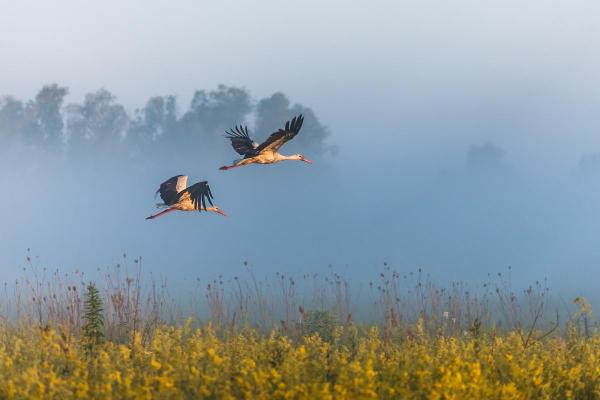
When do storks migrate?
Storks typically migrate during two main periods of the year, coinciding with seasonal changes:
- Dry periods
- Rainy periods
In the Northern Hemisphere, their migration generally begins from late August to October, signaling the arrival of autumn. They travel to warmer regions for the winter and return to their original habitats in spring, typically between February and April.
Several factors influence the timing of migration, including temperature, daylight hours, and food availability. Adult storks usually lead the migration, with younger storks following and learning the routes from them.
The timing of stork migration can vary due to climatic conditions and the specific routes taken. On average, the white stork takes about 2 to 4 weeks to complete its journey from Europe to Africa.
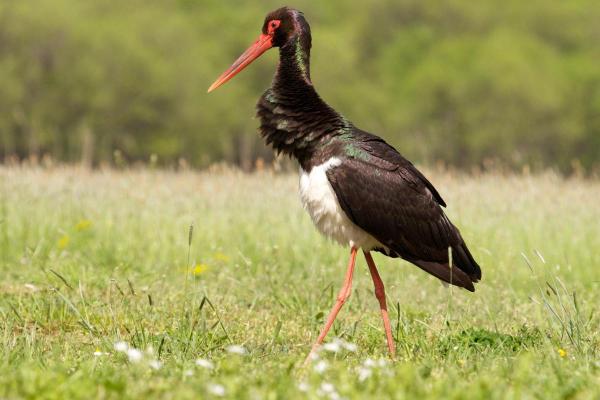
Where do storks migrate?
Stork migration patterns vary based on species and their native regions.
While many stork species undertake long-distance migrations, others are non-migratory or exhibit limited movement. For example, the black-billed stork (Ephippiorhynchus senegalensis), the African woolly-necked stork (Ciconia microscelis), the saddle-billed stork (Ephippiorhynchus senegalensis), and the shoebill (Balaeniceps rex) are largely non-migratory or make short internal movements within their range.
In contrast, European storks, such as the white stork (Ciconia ciconia), typically migrate to sub-Saharan Africa during the winter months, seeking out wetland habitats like swamps and marshes that are rich in food. Depending on conditions, some populations may migrate further south within Africa, while others head to the Middle East, Asia, or even India.
In recent years, climate change has introduced new challenges for stork populations. Changes in temperature, altered rainfall patterns, and shifts in food availability have disrupted breeding grounds and migration routes. As a result, the migration patterns of many storks are becoming increasingly variable and harder to predict, with some species adapting by shortening their migration distances or staying in breeding areas longer than usual.
Want to learn more about the diverse world of storks and their relatives? Check out our article on the shoebill.
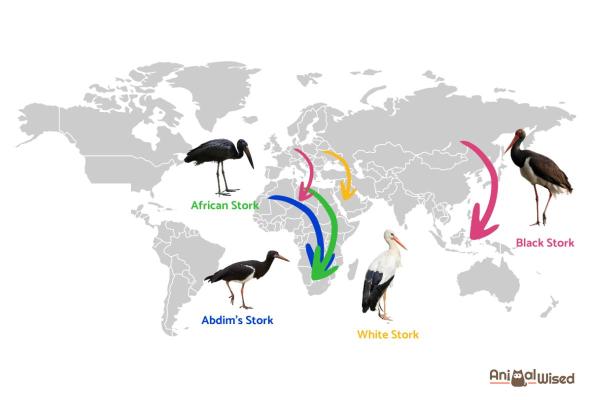
Migratory route of storks
Thanks to advancements in technology, scientists have been able to track these birds' movements with greater precision using tracking devices and geolocators. Let us take a closer look at some specific migration routes:
- White Stork (Ciconia ciconia): a Palearctic migrant, the white stork utilizes thermal currents to ascend and navigate its routes. Avoiding large bodies of open water, it typically skirts the Mediterranean to the west or east before heading towards the Sahara. In Africa, its movements are influenced by food availability, often following swarms of locusts.
- Black Stork (Ciconia nigra): while most black stork populations migrate along narrow, defined routes, some breeding groups, particularly those in Spain and Southern Africa, are non-migratory. They may travel alone or in small groups, traversing the Mediterranean through the Bosphorus, Sinai, or Gibraltar. Their migration routes often lead to Morocco, the coast of the Sahara, Sicily, and Cap Bon in Tunisia.
- African Stork (Anastomus lamelligerus): this species engages in transequatorial and intra-African migrations, typically beginning with the onset of the rainy season. It migrates in flocks.
- Abdim's Stork (Ciconia abdimii): another intra-African transequatorial migrant, Abdim's stork begins its journey with the rains. Breeding in the northern tropics, it moves eastward and then southward, depending on its population. The return journey is typically through eastern Africa.
Curious about other fascinating animal migrations? Discover a wide range of migratory creatures in our other article.
If you want to read similar articles to Where Do Storks Go in Winter?, we recommend you visit our Facts about the animal kingdom category.
- Dewey, T. (2006). " Ciconia ciconia ". Animal Diversity Web. Available at: https://animaldiversity.org/accounts/Ciconia_ciconia/
- IUCN. (2024). The IUCN Red List of Threatened Species. Version 2024-1. Available at: https://www.iucnredlist.org

